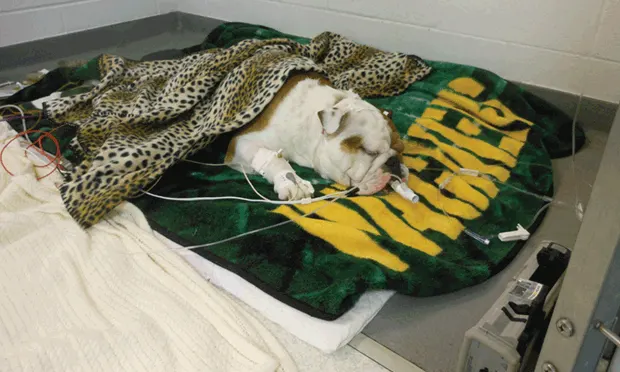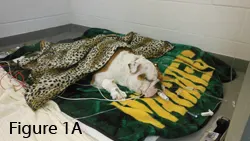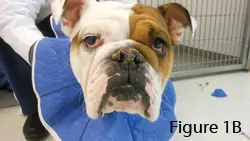Human Medication Intoxications
Andrew Linklater, DVM, DACVECC, Veterinary Specialists of the Rockies, Castle Rock, Colorado

You have asked…
How do I treat common human medication intoxications in veterinary patients?
The expert says…
Because veterinary patients commonly present for human medication ingestion, veterinarians should have treatment plans for patients that have ingested these medications, including over-the-counter and prescription medications (eg, NSAIDs), new classes of antidepressant medications, amphetamines (used in the treatment of attention deficit-hyperactivity disorder [ADHD]), marijuana, and vitamin D.
As with any patient, it is imperative to stabilize airway, breathing, and circulation first.
Related Article: Naproxen Toxicosis in an Elderly Greyhound
General Approach
As with any emergent patient, it is imperative to stabilize airway, breathing, and circulation first. Carefully questioning the owner often reveals the ingested toxin. Asymptomatic patients that present <4 hours after ingestion may benefit from emesis induction with apomorphine (dogs) or xylazine (cats). If the patient is stable, administration of activated charcoal may be warranted (for treatment agents see Table 1) In addition, contraindications for emesis should be considered before induction. When needed, gastric lavage should be performed in an anesthetized, intubated patient to provide comfort and limit risk for aspiration. General supportive care measures depend on clinical signs and may include antiemetic therapy, IV fluid therapy, blood pressure monitoring, oxygen therapy, and/or symptomatic supportive care.
Table 1: Agents Used for Toxic Exposures
Contraindications for Inducing Emesis
Patient Considerations
Respiratory distress and/or disease
Seizures
Neurologic impairment
Weakness
Inability to protect airway
GI and/or abdominal disease
Toxin Considerations
Corrosives
Acid substance
Alkali substance
Sharp objects
Potential danger to staff
Significant vomiting already occured
Underlying disease predisposing to aspiration (eg, laryngeal paralysis, megaesophagus)
NSAIDs
NSAIDs, which interrupt prostaglandin production by inhibiting cyclooxygenase, can result in decreased blood flow to renal and GI systems. Liver and platelet function may also be affected with large-quantity or chronic ingestion. Toxicosis severity and treatment duration may be impacted by dehydration; time until decontamination and/or treatment; and preexisting hepatic, renal, or GI disease. Vomiting and diarrhea, secondary to GI irritation, are the most common signs, but they may not be evident initially.
Accidental NSAID ingestion untreated for >8 hours can cause risk for acute renal failure and GI ulceration. When large doses are ingested, decontamination and ≥48 hours of twice-maintenance IV fluids are recommended to prevent renal injury. GI protectants (eg, misoprostol, H2-blockers, proton pump inhibitors, sucralfate) may be beneficial. Misoprostol can help maintain GI blood flow. Proton pump inhibitors and H2-blockers help reduce gastric acid while sucralfate coats the ulcerated region; both should be administered if a GI ulcer is suspected. Simple renal injury may respond to fluids and medications; oliguria and anuria require intensive monitoring and/or dialysis. Liver injury has been reported with some NSAID ingestion and may warrant further therapy. Baseline serum biochemistry and daily monitoring for at least 48 to 72 hours are recommended.
Antidepressant Medications
Most antidepressant medications work via reuptake inhibition or altered transport of serotonin, norepinephrine, or dopamine (See Table 2). Many are rapidly absorbed and come in extended-release or long-acting formulas. Clinical signs of toxicosis can vary, depending on the medication; selective serotonin reuptake inhibitors (SSRIs) can result in serotonin syndrome, affecting the cardiovascular (eg, hyper- or hypotension, tachycardia), GI (eg, vomiting, diarrhea), and neurologic (eg, sedation, agitation, ataxia, tremors, seizures) systems.1
Standard decontamination is recommended but should be avoided in symptomatic patients. Supportive and symptomatic care are the mainstay of therapy. Fluid therapy does not enhance elimination but may help correct dehydration and acidosis; sodium bicarbonate may be given to patients with severe acidosis. Passive and/or active cooling may be necessary for hyperthermic patients. Propranolol or esmolol may be used for supraventricular tachyarrhythmias, norepinephrine or epinephrine for hypotension, and benzodiazepines for sedation or treatment of tremors or seizures.1-3 Methocarbamol has been recommended as an alternative therapy for tremors. Phenothiazine use remains controversial. Seizures not responsive to benzodiazepines may be treated with barbiturates. Although it is not specifically studied in toxicologic overdoses, status epilepticus not responsive to benzodiazepines and barbiturates may respond to propofol or inhalant (isoflurane) anesthesia.3-8 Specific therapy includes serotonin antagonism with cyproheptadine.
Table 2: Common Antidepressant Medications
MAOI = monoamine oxidase inhibitor, NaSSA = noradrenergic and specific serotonergic antidepressant, NDRI = norepinephrine-dopamine reuptake inhibitor, NRI = norepinephrine reuptake inhibitor, SNRI = serotonin-norepinephrine reuptake inhibitor, SSRI = selective serotonin reuptake inhibitor, TCA = tricyclic antidepressant
Supportive and symptomatic care are the mainstay of therapy.
ADHD Medications
ADHD amphetamines (See Table 3) are stimulants that inhibit norepinephrine and dopamine reuptake in the brain. Clinical signs are neurologic (eg, agitation, shaking/trembling, circling, seizures, disorientation, coma, death), cardiovascular (eg, tachycardia, hypertension, potential reflex bradycardia), and GI (eg, vomiting, abdominal pain). Standard decontamination should be used judiciously because of possible inability to protect the airway.
Additional treatment (See Figure 1 below) is symptomatic and supportive; phenothiazines (eg, acepromazine) are the first-line agents for excessive stimulation and may also be used to treat hypertension and hyperthermia. Keeping the patient in a quiet, dark room to minimize stimulation may help. Use of benzodiazepines in patients with stimulatory signs is controversial; however, they may be used for seizures. Seizures not responsive to benzodiazepines may respond to barbiturates or propofol.3-9 Excessive muscle fasciculations may also be treated with methocarbamol. IV fluids and cooling may be necessary for patients with elevated body temperatures. Because some ADHD medications are lipophilic, IV lipid solutions may be considered; however, there are little data available on their use with these medications.
One-year-old intact male bulldog presented after ingestion of the owner’s Adderall (amphetamine–dextroamphetamine). The dog presented hyperthermic and tachycardic and developed seizures. It required sedation, antiepileptic medications, and b-blockers to control signs (Figure 1A).


One-year-old intact male bulldog presented after ingestion of the owner’s Adderall (amphetamine–dextroamphetamine). The dog presented hyperthermic and tachycardic and developed seizures. It required sedation, antiepileptic medications, and b-blockers to control signs (A). Endotracheal intubation and intermittent oxygen supplementation were required because of heavy sedation. Thirty-six hours later (B), the dog was normothermic, had a normal heart rate, and no longer had seizures. Several days after presentation, it was reportedly doing well.
Table: Common ADHD Medications
Seizures not responsive to benzodiazepines may be treated with barbiturates.
Marijuana
Marijuana (Cannabis sativa), legally prescribed for humans in select states, contains Δ9-tetrahydrocannabinol (THC), which alters neurotransmitter activity. Patients typically present with altered mental status, ataxia, and dilated pupils; potential agitation, seizures, and/or coma may result in death. Additional signs can include vomiting, diarrhea, arrhythmias, tachypnea, and incontinence. In dogs, over-the-counter urinary tests are unreliable for diagnosis.
Decontamination should be avoided when altered mental status is present, and emesis is often unrewarding. Supportive care is the mainstay of treatment. Because renal elimination of THC is minimal, the benefit of diuresis is questionable; fluids may be used to treat dehydration. Benzodiazepines can be used safely for agitation, seizures, and tremors; monitoring temperature, respirations, and heart rate is essential. Most patients recover uneventfully within 24 to 96 hours; however, ingestion of large quantities may require aggressive supportive care. IV lipid infusions have been advocated anecdotally and used successfully by the author.
Vitamin D
Vitamin D3 is available as a sole supplement, in multivitamins (which may also contain toxic levels of iron, xylitol, and vitamin A), or in rodenticides. Initial clinical signs (8–12 hours after ingestion) are vague and include lethargy, vomiting, diarrhea, and inappetence resulting in hypercalcemia and renal failure (occurring 36–48 hours after ingestion), which cause polyuria/polydipsia, weakness, hematemesis, and arrhythmias. Decontamination should be initiated immediately, as vitamin D3 has a prolonged action and treatment can be challenging and costly if hypercalcemia develops. When decontamination is not possible or is incomplete, IV lipid emulsion may also help prevent hypercalcemia, as vitamin D is fat soluble. Ionized calcium levels should be monitored q24h for 5 to 7 days. When ionized hypercalcemia is present, therapies (eg, saline diuresis, furosemide, steroids, salmon calcitonin) may need to be combined. Pamidronate inhibits osteoclast function and has prolonged activity, making it an attractive alternative if other therapy is unavailable or ineffective.